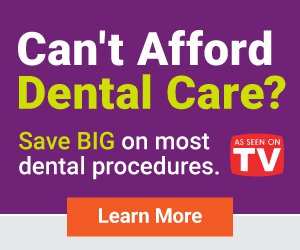Adult Braces: Are They Worth It?
Most people think that only teenagers get braces. Yet, out of the 4 million Americans that have braces, 25% are adults. While there are a lot of reasons to get braces, people still hesitate to get them. Whether it’s the cost or the look of adult braces, there’s plenty to think about before you get them.
Discover the prices and types of adult braces, and find out if it really is the right option for you.
Reasons to Get Adult Braces
There are clear benefits to getting braces. Yet, you may find some surprising reasons why orthodontists recommend teeth realignment.
Aesthetics
A perfect smile is more than just pretty. It’s a status symbol.
With a society obsessed with pearly whites, it’s easy to see how the look of perfect teeth is something everyone wants.
Two separate studies, one published in 2012 and another in 2013 concluded that the appearance of teeth greatly affects how you look at and judge people. In dating, any deviation from traditional spacing and a white color negatively affected ratings of attractiveness.
Adult braces will straighten crooked teeth and close any gaps to produce an even set that looks great when you smile.
Confidence
Of course, how you look may be the most important reason why you can get braces.
But, don’t forget about how you feel.
Straight teeth can give you a confidence boost like nothing else. And the pride you feel about your teeth is definitely something worth smiling about.
Dental Health
While cosmetic reasons for getting adult braces are both valid and compelling, your health is an even more important one.
Misaligned teeth raise the risk of developing cavities, simply because you can’t clean them properly.
Bad dental hygiene leads to a buildup of plaque and tartar, which result in cavities.
And if you don’t take care of cavities, they can cause a lot of health problems, even death.
Untreated tooth decay affects your nerves past your teeth. It can also start infecting your gums and you develop gingivitis. When gingivitis turns into periodontal disease, it causes permanent damage to your gums. Sadly, the infection doesn’t just stay in your mouth.
You oral health affects your general overall health more than you probably realize. Your oral health is connected to some serious conditions including cardiovascular (heart) diseases, diabetes, pneumonia, osteoporosis, endocarditis, and HIV/AIDS.
All because you couldn’t brush your teeth probably due to misaligned teeth. When you take care of the look and hygiene of your mouth, you are protecting yourself from later dental troubles like cavities and periodontal disease.
Correcting a Bite
One of the most important reasons why orthodontist recommend braces is to correctly align your bite.
That’s because this directly affects the way you chew, talk, and breathe.
A misaligned bite can lead to a host of problems, most importantly TMD (temporomandibular disorders).
TMD affect your temporomandibular joints (TMJ). If you have severely misaligned teeth, your bite doesn’t fit, and creates tension in your TMJ. The symptoms of TMD can be quite severe and painful:
- Headaches
- Earaches
- Problems with chewing, speaking, and/or biting
- Gastrointestinal problems from an inability to chew food properly
- Jaw pain
- Irregular wear of the tooth enamel
- Facial pain
Braces for adults can be a solution to:
- Malocclusions (crossbite, overbite, underbite, open bite)
- Overcrowding
- Uneven spacing
- Temporomandibular joint disorders
- Gum problems
Types of Adult Braces
When you were a teen, there may not have been as many options for braces as there are today. Thanks to immense innovation in orthodontic devices recently, there are various options for adult braces.
Discover what types of braces there are to know which one would suit you best.
Traditional Braces
What is considered traditional braces are available in four types: metal, ceramic, self-litigating, and lingual.
Metal braces are good for quickly straightening very crooked teeth. Modern metal braces look nothing like the unsightly orthodontia of the past. The brackets are much smaller and are no longer wrapped around the entire tooth. They can also be customized to match the color of your teeth and gums to make them as unnoticeable as possible.
Additionally, heat-activated archwires are now available that use your body heat to move teeth with more speed and less pain than in the past.
Ceramic Braces are good for adults who want discreet but quick orthodontia.
Ceramic braces are identical to metal braces in shape and size, but, instead of metal brackets, they have clear or tooth-colored brackets. Some ceramic braces use tooth-colored archwires to look even more inconspicuous. If you’re worried about the look of adult braces, this is a great option.
Self-litigating braces are good for patients who are more sensitive to discomfort. They work in a similar way to metal and ceramic braces, relying on braces and wires to move the teeth. The difference is that self-litigating braces do not use elastic rubber ties instgead use clips or doors to hold the wire in place. This makes them easier and quicker to adjust.
Lingual braces are good for adults who want the benefits of metal braces without visibility. Lingual braces are mostly the same as traditional metal braces, but the archwires and brackets are applied to the back of the teeth. As a result, no one will be able to tell from the outside that you have braces.
Invisalign
Invisalign® are clear plastic aligners. They’re good for moderate cases who value invisibility over the speed of treatment.
Invisalign braces resemble a mouthguard. You'll put in a new mouthpiece every couple of weeks.
One of the benefits of Invisalign is flexibility. You can brush, floss, and eat normally during treatment by simply removing the aligners.
Please note Invisalign® is a brand name and there are other types of clear aligners on the market.
Retainers
Retainers are technically not braces, but a post-brace treatment.
Retainers hold straightened teeth in place while the surrounding gum and bone continue to adjust to their new position. Retainers can be either fixed or removable. Without them, there is a likely risk of tooth movement.
How to Get Adult Braces
The type of dentist who prescribes, applies, and adjusts your braces is an orthodontist.
Once you have decided on getting braces, the traditional way is to pay a visit to your dentist. They will either refer you to the orthodontist within their own practice or recommend someone.
The orthodontist will discuss the types of braces and advise on the best type of treatment.
How Much Do Adult Braces Cost?
According to the American Dental Association's 2020 Survey of Dental Fees, the average cost for adult braces is around $6,000.
The cost will vary by the type of braces and your local economy. According to Healthline.com, typical costs are:
Save on Your Adult Braces With a Dental Discount Plan
Braces may be expensive, but that doesn’t mean that you have to pay full price for them.
While some dental insurance plans cover braces, a lot of them don’t. If you don’t have dental insurance or it doesn’t cover braces, your best chance of getting discounted dental treatment is with a savings plan like Carefree Dental.
You can save 15-50%* off your dental bill at participating providers, per visit in most instances if you have a Carefree Dental Card. For only $15.95/month for individuals and $19.95/month for families, this can mean great huge discounts on your adult braces.
Get your dream smile at a fraction of the cost by signing up for Carefree Dental!
*Actual costs and savings vary by provider, service and geographical area.
The Carefree Dental blog is not meant to be a substitute for professional medical advice, diagnosis, or treatment. The text and pictures within the content are intended for information purposes only. Readers should consult with a licensed dentist or healthcare professional before seeking treatment.
The Carefree Dental Card is not insurance and Carefree Dental is not an insurance provider.





